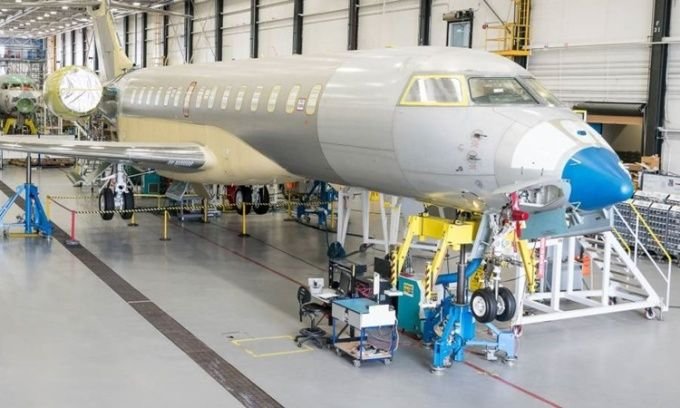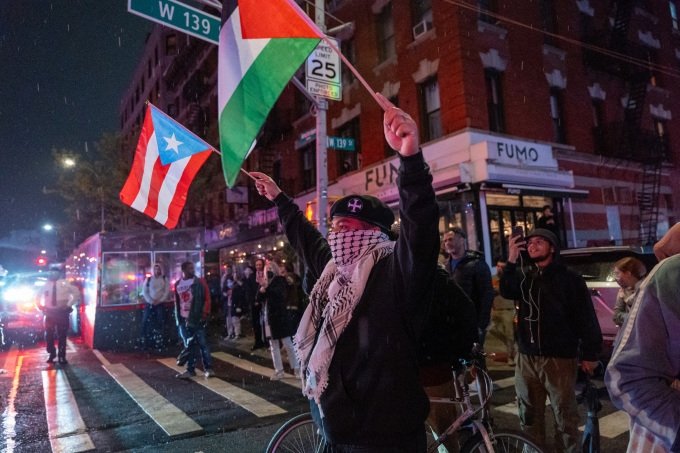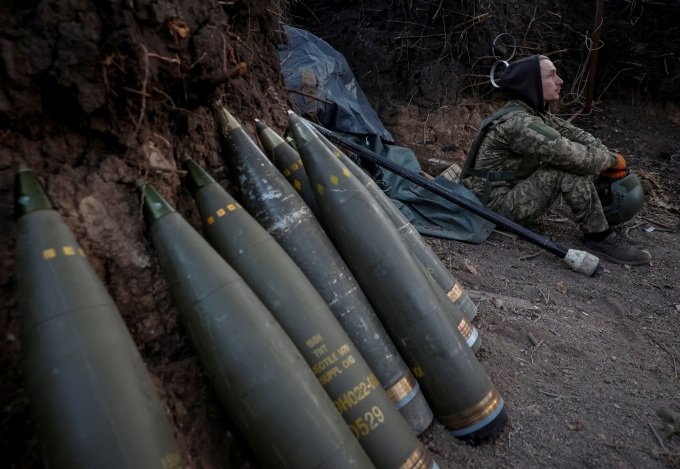
How factories apply ‘bubbles’ to fight Covid-19
Bombardier Aviation, an aircraft manufacturing company with 22,000 employees in 7 factories in 4 states of Canada and the US, was elected in April by the Federation of Quebec Chambers of Commerce (FCCQ) as one of the winners of the award.
Bombardier was awarded for its innovations in efforts to ensure the safety of workers and employees at its factories during the Covid-19 pandemic.
Bombardier’s `labor bubble` model was taken up by researchers at the University of Calgary in an analysis published in the Canadian Medical Association Journal.
Inside an aircraft factory of Bombardier Aviation.
When Covid-19 broke out in Canada last year, the company had factories located in the two most heavily affected cities in the country, Montreal and Toronto.
The factory had to close for three days to carry out complete disinfection and trace workers who had contact with the infected case.
Because aircraft manufacturing is a long-term business and requires significant investment to carry inventory, reducing production cycle times is important.
Hundreds of employees enter and exit the same building in a narrow period of time.
The work process requires workers to come into close contact, especially when they manufacture aircraft interiors or install important parts.
According to experts from the University of Calgary, the `bubble` model, whose key is to divide the workforce into work groups based on the principle of redundancy and function, can both ensure employee safety.
At Bombardier, office workers such as engineers, finance staff, managers, and programmers are forced to work remotely.
For the above workers, Bombardier divides them into working shifts and adds some rules, forming separate `bubbles`.
“Functional bubbles” have the lowest amount of labor required to complete the work.
Bombardier also ensures isolation by scheduling employee entry and exit times so that no two groups are in the same location at the same time, while also limiting access to common areas such as locker rooms or restrooms.
Similarly, Bombardier also stipulated that each group of workers is not allowed to move freely between different zones but must stay in a certain area to further minimize interaction.
In particular, Bombardier increased the weekly working time of each team from 8-hour shifts to 10-hour shifts.
To further protect staff and reduce the possibility of spread, a `bubble within a bubble` mechanism was also established.
Although this is key to safety, it also poses organizational challenges because employees with different skills and expertise are often needed in many different departments and groups.
Besides the `labor bubble` model, daily symptom screening for workers is also a good way to reduce the probability of an outbreak in the workplace.
In Malaysia, the government in March also issued a `safe labor bubble` initiative.
Workers who come into close contact with positive cases will be placed in a separate housing area separate from the community and other workers until they test negative again.
Company management is responsible for creating bubbles at the workplace and workers’ residences, and ensuring that the movement of workers in close contact is safe and does not cause any negative impacts.
Some other points of the initiative include the establishment of Emergency Response Readiness Teams created by the company to prepare and apply accurate case handling procedures, as well as regular inspection and monitoring.
The company also needs to continuously disinfect the factory and mobilize available vehicles to transport workers.
If the `labor bubble` is carefully managed, a Covid-19 positive employee can notify the employer and other colleagues in his or her bubble to self-isolate.


